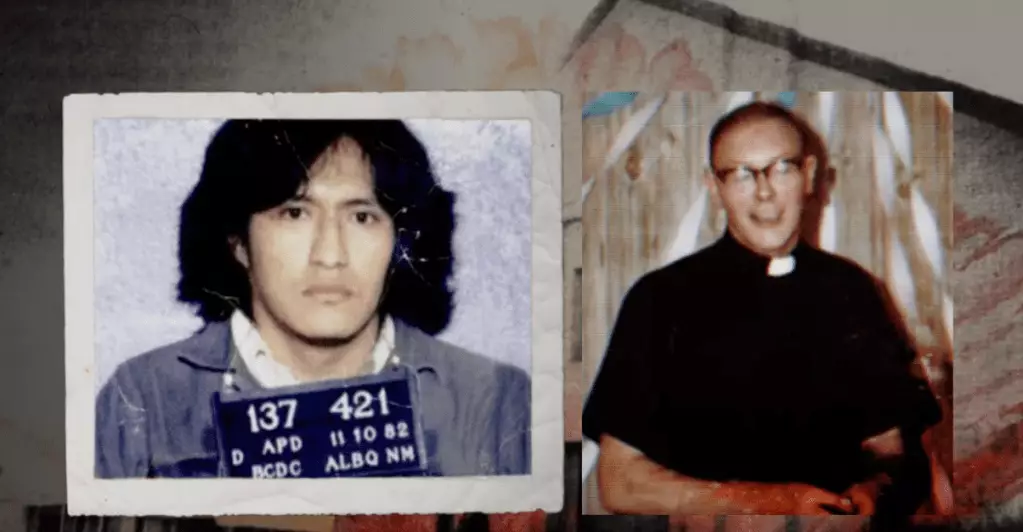In 1981, the unthinkable happened in the small town of Odessa, Texas, where the body of Father Patrick Ryan, a closeted gay Catholic priest, was discovered in a motel room, arousing both tragedy and suspicion. The bizarre positioning of his body—arms tied behind his back—immediately painted a gruesome portrait of the crime, yet it also beckoned a more profound question: who was the real culprit? The tragic irony of Ryan’s life and death reveals not only a societal failure but also highlights the harrowing reality of prejudices interwoven with criminal justice.
Reyos, the man wrongfully convicted for this heinous act, became an easy target for a community gripped by both homophobia and racism. Seen through a narrow lens, his identity as a closeted Apache man rendered him a “throwdown character,” someone the local law enforcement could politically scapegoat to placate public outrage. This case reflects a misalignment in justice, where societal biases overshadow the truth and lead to the wrongful imprisonment of an innocent man—a narrative that echoes too often in our history.
The Cycle of Misguided Justice
The Texas conviction of James Harry Reyos serves as a haunting reminder of how judicial systems can fail. Despite having a solid alibi for his whereabouts the night of Father Ryan’s murder, Reyos was found guilty—a verdict tainted by discriminatory practices that often plague the legal system. The tragic and frustrating aspect of this case is the blatant disregard for evidence unfit for a civilized society. A modern examination would quickly dismiss such an unjust ruling, but in 1981, the fabric of society was tightly bound by outdated norms and prejudices.
The systemic flaws in justice are highlighted through Reyos’s long, grueling fight for exoneration—two decades spent behind bars, compounded by the psychological toll of an unjust conviction. As a society, we must ask ourselves: how many more Reyoses are lost within the labyrinth of mismanaged justice due to societal biases and fear-fueled narratives? The tragedy lies not only in Reyos’s wrongful imprisonment but in an entire society marginalized by a mishandling of human rights.
Reopening Old Wounds
Since the installation of new leadership under Chief Mike Gerke in Odessa, the case received new scrutiny—a necessary development long overdue in our collective conscience. Gerke’s decision to reopen the investigation sparked hope in a narrative filled with despair. His daughter-in-law’s curiosity sprouted from the thirst for truth and accountability, showcasing how transformation often begins within our immediate circles. It’s a powerful reminder of how even the smallest inquiries can yield justice years, if not decades, after the initial crime.
The acknowledgment of latent evidence—bloody fingerprints that had never been processed—shines a stark light on the negligence that plagued Reyos’s initial trial. An entire life marred by wrongful conviction could have been avoided had justice systems committed to the rigorous pursuit of truth from the onset. The intersection of advanced technology with diligent investigation offers an opportunity for redemption, yet it also underscores how easily innocent lives can be exchanged for convenience or ignorance.
A Community United in Justice
What emerges through the renewed investigation is not just a story of one man but of a community that rallied around him—a collective insistence that justice must prevail. Across various platforms including social media, documentaries, and advocacy organizations such as the Innocence Project of Texas, voices united in a shared goal: to right how wrongs persist in the corridors of our justice system. Their journey exemplifies how community pressure can catalyze real change, prompting officials to confront uncomfortable truths.
The film, “Night in West Texas,” recounts Reyos’s painful journey with piercing compassion. Filmmaker Deborah Esquenazi approaches the narrative with rigor and sensitivity, elevating the story of Reyos not merely as a statistic, but as a human being ensnared in a system designed to protect. Through her lens, we witness not just a detached tale of wrongful conviction, but a vivid illustration of resilience and the unbreakable spirit of those wronged by a flawed system.
In a landscape fraught with injustice, the resonance of Reyos’s story drives home the crucial message that accountability is not just an ideal; it is a right that must be fiercely championed.


Leave a Reply